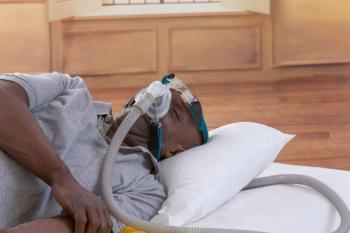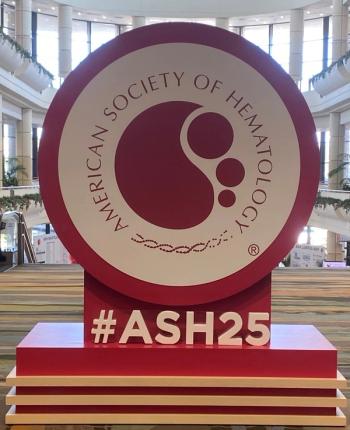
Empathy, Support Are Crucial to Help Patients With Methamphetamine-Related Pulmonary Hypertension
With methamphetamines continuing to inflict damage on the Western United States, panelists at the CHEST Annual Meeting 2023 shared sobering statistics and important considerations in treating patients with pulmonary hypertension associated with use of this destructive drug.
A session about methamphetamines began with a warning for the crowd of pulmonologists gathered at the
He and fellow panelists delivered talks on the physiological impacts of the drug on the body, including its role in causing pulmonary arterial hypertension (PAH); the need to recognize methamphetamine-associated PAH as a distinct phenotype; and the importance of treating these patients with compassion and multidisciplinary support.
According to Vijay Balasubramanian, MD, of the Valley Advanced Lung Diseases Institute in California, methamphetamines are a global threat whose prevalence has skyrocketed over the past 2 decades. In 2020, 34 million individuals worldwide reported use—guaranteed to be an underestimate—and the burden is particularly severe in the United States, where 1.3 million Americans reported past-year meth use. Alarmingly, 1.1% of US 12th graders had used meth in the past year.
There’s a clear geographic pattern to substance use in the United States, with the West dominated by meth whereas the East is more impacted by fentanyl. In the Central Valley of California where Balasubramanian works, there has been a steady rise in positive drug screens for methamphetamines, and use in the CHEST conference’s host state of Hawaii is far higher than the national average.
Among methamphetamine’s particular dangers are that it crosses the blood-brain barrier, resulting in neuron cell death and mitochondrial dysfunction. Of the body’s solid organs, the lungs experience the most rapid uptake and greatest accumulation of the drug, and there has been increasing recognition of its role in PAH since the 1990s. Patients with methamphetamine-associated PAH are known to have more adverse social determinants of health, worse hemodynamics, and poorer survival than those with idiopathic PAH, leading researchers to begin to consider this subset as a distinct phenotype of PAH, informed by both genetics and environment.
“Meth use is a growing national and global threat, increasing burden on global health care, and has several and severe systemic consequences and distinct characteristics in PAH,” Balasubramanian said.
No state is more closely tied to the idea of methamphetamine in the public consciousness than New Mexico, thanks to the popular television show Breaking Bad, as acknowledged by the next presenter, Lana Melendres-Groves, MD, of the University of New Mexico. Indeed, the Crossroads Motel shown in the series is right across from one of the state’s largest hospitals, where the characters themselves would have gone for treatment.
The face of methamphetamine production and addiction has changed over the years, beginning with homegrown meth used by shift workers and truckers to stay awake in the 1990s and now much more widely available as superlabs in California and northern Mexico churn out massive quantities at low prices. About 100,000 Americans try meth for the first time each year, and there is growing overlap with use of other drugs like cocaine and opioids. Use rates and mortality outcomes are highest among underserved populations, including American Indian and Alaskan Natives and individuals with little access to health care, incomes below $20,000, and a high school diploma or less.
“These are the individuals that are not only abusing methamphetamines, they are overdosing and they’re now presenting to our clinics with PAH and we’re trying to manage them knowing what we’re up against,” Melendres-Groves said. “For me, trying to manage this complex patient becomes more and more difficult in that it’s a population that has very little resources, they don’t necessarily come to appointments, and in terms of that multidisciplinary approach, we have to set boundaries and we have to be consistent with those boundaries.”
Delving deeper into the treatment of patients with methamphetamine-associated PAH was Namita Sood, MBBCh, FCCP, who sees such patients at UC Davis Health. The goals of her approach are to help patients achieve sobriety, decrease emergency department use and missed clinic visits, and improve key outcomes like 6-minute walk test time, hemodynamics, and quality of life.
To do so, she and colleagues have improved their documentation and screening processes, including asking about drug use and mood disorders in initial questionnaires and check-ins. They refer patients to drug counseling in hopes of treating the addiction and the PAH at the same time. Medication options like bupropion/naltrexone or mirtazapine can be helpful if covered by insurance, but a contingency management approach has been most effective, in which patients are given Starbucks or Walmart gift cards for each negative drug screen. This strategy is widely used in the Veterans Affairs health care system but is prohibited by CMS for Medicare and Medicaid patients, Sood noted.
Alongside this counseling, clinicians manage the PAH with phosphodiesterase type 5 inhibitors and endothelin receptor antagonists in a stepwise approach as needed, although Sood noted that oftentimes PAH symptoms will improve dramatically after methamphetamine use is stopped. This period is a crucial time for support to prevent relapse: “When we hit that point where they start feeling better, that’s actually the highest risk of going back” to using drugs, Sood cautioned.
Kingrey returned to the podium to provide his perspective on the psychiatric component of treating methamphetamine-associated PAH. Reminding the audience of the physiologic pathways in the brain created by addiction, he noted that repeated exposure to a drug diminishes prefrontal cortex activity associated with executive function. It’s crucial for clinicians to keep in mind that drug use isn’t just a patient’s decision that they do to themselves; that mindset is “like blaming somebody’s tumor,” he said emphatically.
He noted that the shift in methamphetamine production from the homegrown substances produced via cold medicines in the 2000s to the exponentially higher quantities now flowing out of superlabs with cartel links has brought a concomitant increase in drug purity, with today’s product registering at 98% pure methamphetamine vs the 30% to 60% purity seen in decades past. It’s no surprise, then, that 58.4% of cases of methamphetamine use disorder were classified as severe in 2021.
But beyond these statistics, Kingrey emphasized the importance of seeing the patient as a whole person. Those treating meth-associated PAH will have to take their doctor hat off, put their computer away, and listen, because that’s the only way their patient will stay engaged in care. The old attitude of dismissing addiction as something a patient has brought on themselves is damaging, judgmental, and disrespectful.
“If you don’t engage them and you don’t show them that you love them and that you care about them, you are going to lose them,” Kingrey said. “You have to put 100% of your focus on how you’re going to get the patient to trust you.”
Newsletter
Stay ahead of policy, cost, and value—subscribe to AJMC for expert insights at the intersection of clinical care and health economics.













































